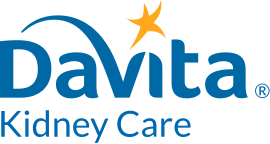Disclaimer: This article is for informational purposes only and is not intended to be a substitute for medical advice or diagnosis from a physician.
The diet for stage 5 chronic kidney disease (CKD), or end stage renal disease (ESRD), takes into consideration lab results, nutritional status, and plans for transplant, dialysis or no treatment. For most people in stage 5, eating becomes a challenge because of uremia, a condition that occurs when waste accumulates in the bloodstream. Preventing malnutrition is a top priority, as it can reduce the risk of hospitalization and even death before starting dialysis or undergoing surgery for a kidney transplant.
Here are five diet guidelines to help you manage your diet in stage 5 CKD prior to dialysis or transplant.
1. Know your allotted protein amount and strive to eat that amount each day.
Limiting protein helps reduce waste buildup in the blood and can help control uremia. However, a low-protein diet coupled with loss of appetite also puts you at high risk for malnutrition. The recommended amount of protein to eat in stage 5 is 0.6 to 0.75 grams of protein per kilogram body weight. A nutrition assessment by a registered dietitian will determine the right amount of protein for you.
2. Eat enough calories to maintain your weight, even if you are overweight.
Inadequate calorie intake may occur in stage 5 CKD due to appetite troubles, gastrointestinal problems, aversion to certain animal proteins, chronic inflammation, medications, depression and other medical conditions such as diabetes or heart disease. Even if you are overweight, a low calorie intake and weight loss is not recommended in stage 5. Aim for adequate calories to prevent weight loss and to help preserve your body’s muscle stores. Ask your doctor or dietitian about a nutritional supplement for a CKD non-dialysis diet if you are experiencing poor appetite and weight loss.
3. Monitor potassium levels that may increase due to low urine output or from medications.
Potassium builds up in the body when kidney function declines. Avoid the highest potassium foods and track your potassium level by getting regular blood tests.
High-potassium foods
| Avocado | Bananas |
| Cantaloupe and honeydew | Dried fruit |
| Legumes | Milk and yogurt |
| Nuts and seeds | Oranges and orange juice |
| Potatoes | Pumpkin and winter squash |
| Salt substitutes and low-sodium foods that contain potassium additives | Tomato products (juices, sauces, paste) |
Your doctor or dietitian will provide additional information on potassium and your kidney diet prescription. See "Potassium and Chronic Kidney Disease" for more on foods to limit and which ones to keep when you’re prescribed a low-potassium diet.
4. Phosphorus levels are likely to occur naturally if you are limiting high-protein foods.
Phosphorus-calcium imbalance and bone changes can occur as early as stage 3 CKD, but high phosphorus levels may not occur until stage 5. If you are following a low-protein diet, you naturally decrease phosphorus intake, because protein and phosphorus go together. Additional sources of phosphorus are from phosphate additives in processed foods. Read ingredient labels to avoid additives with "phos" in it.
Foods naturally high in phosphorus
| Cheese | Chocolate |
| Ice cream | Legumes |
| Milk and yogurt | Nuts and seeds |
5. Control fluid retention and blood pressure with lower sodium and fluid intake and prescribed medications.
Fluid restriction and the degree of sodium restriction needed vary greatly with people in stage 5 CKD, so your requirements will be assessed by your doctor and dietitian. Weigh yourself daily to track weight gains. Fluid weight gains occur quickly, and are associated with swelling and shortness of breath. A high-sodium diet can make you retain more fluid and can affect blood pressure. Ask your doctor or dietitian about the amount of sodium you need each day. For tips to manage sodium intake, read "Sodium and Chronic Kidney Disease," and to help manage fluid check out "Fluid Control for People on Dialysis."


